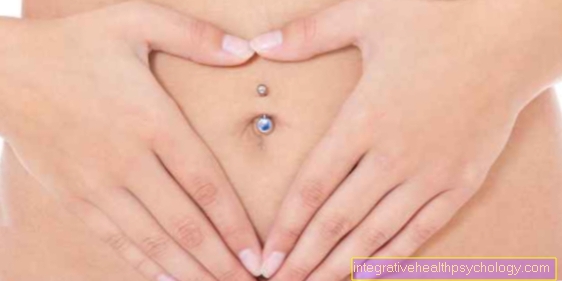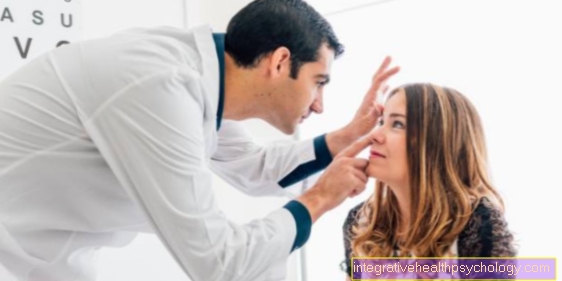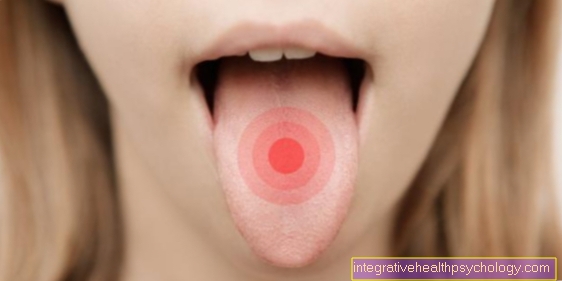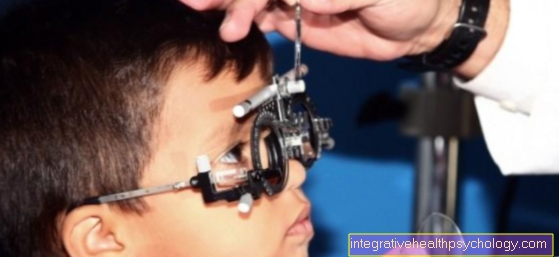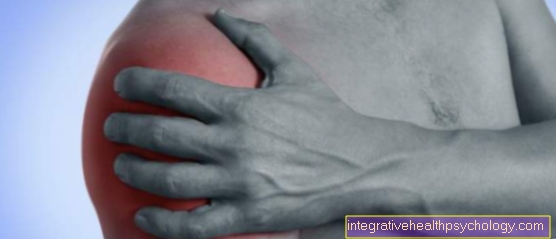The underground investigations
What are the U exams?
The U-examinations (also called child screening examinations) are early detection examinations in which the mental and physical development of a child is regularly checked as part of a pediatrician examination in order to be able to identify and treat any maturation disorders at an early stage. This includes the U-examinations U1-U9.
Since May 2006 there have been further U-examinations (U10-U12 / J1 / J2) in order to be able to accompany the children after the age of 6 until puberty.
The U-examinations are therefore part of a preventive care program for children, which is usually covered by the health insurance companies and is therefore free of charge for parents (except for U10, U11, J2).

How many U-exams are there?
The U-examinations normally scheduled include U1, U2, U3, U4, U5, U6, U7, U7a, U8, U9, U10, U11 as well as the youth examinations J1 (often also referred to as U12) and J2. The time at which the respective U-examinations of the child take place can easily be looked up in the child's yellow examination booklet.As a rule, parents receive this yellow child medical examination booklet when the mother and child are discharged from hospital after delivery. If there is any uncertainty about when the next U-examination should take place, it is advisable to contact the treating pediatrician.
Do I have to go to the U-examination with my child?
In principle, the U-examinations are not mandatory. Nevertheless, it is absolutely recommendable to attend the regular U-examinations U1-U9 as well as the youth examination J1 with the child at the given times. Only in this way is it possible for paediatricians to detect developmental disorders in children at an early stage and to be able to treat them quickly. In some federal states (Bavaria, Baden-Württemberg and Hesse), however, preventive medical check-ups are mandatory. This is to help detect neglect and abuse in children more quickly.
What happens if I don't go to the U-examination?
In many countries, including most of Germany's federal states, special reporting requirements have been introduced which are intended to monitor and thus ensure that children regularly participate in the recommended U-examinations. In these cases, paediatricians are obliged to report any missed U-examinations to the State Institute for Health and Labor. If, despite the parents' reminder of the missed U examination date, no subsequent examination is carried out, a report may even be sent to the public youth welfare organization.
For more detailed information, also read the article: Development in the toddler
Who bears the costs?
The U-examinations U1-U9 and the youth examination J1 are compulsory health insurance benefits and are therefore free of charge for all children from birth to 18 years of age. The additionally recommended examinations U10, U11 and J2 have not yet been reimbursed by every health insurance company, but should nevertheless be carried out for a comprehensive observation of the child's development. In order to find out whether the health insurance company will cover the costs for the U-examinations U10, U11 and J2, a telephone inquiry is usually sufficient. Some providers also reimburse the costs for the U10, U11 and J2 if they participate in a health insurance bonus program.
The individual U-examinations at a glance
U1
The U-examination U1 is usually carried out directly after delivery or in the second to fourth hour of life. The most important goal of this examination is to identify acutely life-threatening diseases or malformations that require immediate treatment, because this is the only way to ensure the fastest possible therapy.
First and foremost, it is important to identify whether the newborn was injured during delivery. Then the so-called vital functions are checked. The pediatrician listens to the heart and lungs. Blood flow, muscle tension and innate reflexes are also checked. As part of the U1, the so-called “APGAR score” is usually also collected.
Another examination that is part of U1 is the collection of a small amount of umbilical cord blood, which is then tested for its oxygen content. This allows a statement to be made as to whether the child's organs can be adequately supplied with oxygen, which is of great importance for their function. Also part of the U-examination U1 is the measurement and weighing of the newborn by the midwife. In order to support blood clotting, the child is also given drops containing vitamin K.
Read more on this topic at: U1 investigation
U2
The U-examination U2 should usually be carried out between the third and tenth day of life. Depending on how long the mother and child have to stay in the hospital after delivery, the U2 is still carried out as an inpatient or by the resident pediatrician.
An important part of U2 is the so-called extended newborn screening. Here, the newborn is tested for important metabolic diseases or cystic fibrosis (disease of the lungs that leads to the production of excessively tough mucus). This examination should be carried out as early as possible, since metabolic diseases are diseases that should be treated early in order to avoid permanent damage to the health of the newborn. In addition, there is a hearing screening in which the child's hearing is carefully checked. As part of U2, the newborn is measured and weighed one more time and examined from head to toe. In addition, during this U-examination, care is taken to identify relevant malformations or the presence of jaundice and to be able to initiate appropriate therapy if necessary.
During the U-examination U2, the newborn is medically given vitamin K once more in order to prevent possible bleeding by strengthening the coagulation factor formation. An important vitamin for bone formation and thus for the prevention of the deformed bone disease rickets is vitamin D, which is formed in adults under UV light radiation. Infants, on the other hand, cannot produce enough vitamin D yet, which is why they should be given one vitamin D tablet daily. This is usually prescribed as part of the U2 and should be taken for about 12-18 months. The third important drug that is prescribed under the U2 is fluoride.
Read more on this topic at: U2 investigation
U3
The U3 should take place between the fourth and fifth week of life. It is usually carried out by a resident pediatrician.
It is of particular importance that developmental disorders in the newborn are recognized and appropriate therapy initiated. The main component of the U-examination U3, however, is the ultrasound examination (sonography) of the child's hip joints. This examination method allows malpositions or malformations (also called hip dysplasia) of the hip to be detected very early.
As part of the U3, there is usually an initial explanation of the recommended vaccinations for babies, which can be given from the 6th week of life. If necessary, a first vaccination appointment can be arranged with the pediatrician. The U-examination U3 also offers space for possible questions from parents. If there are any uncertainties with regard to the new family member, the U-examination offers additional time for a consultation with the parents.
Read more on this topic at: U3 investigation
U4
The U-examination U4 is usually carried out in the third or fourth month of life.
The main focus of this examination is directed to the physical and mental development of the child. The pediatrician pays attention to the movements and reactions of the child and to the parent-child bond. At U4, the doctor also feels the small gap in the bone (also known as the fontanel) on the child's head to check whether it is large enough for the skull to grow further.
As part of the U4, it is also possible to receive the recommended vaccinations if this has not yet happened. A desired vaccination should, however, be agreed in advance with the pediatrician so that the necessary vaccine is always available. The vaccinations most frequently carried out as part of U4 are the six-fold vaccination against diphtheria, tetanus (tetanus), Haemophilus influenzae (HiB), hepatitis B, polio (poliomyelitis), Whooping cough (Pertussis) and vaccination against pneumococci. In the event that the child has already received the first vaccinations at the age of six weeks, there is the possibility of a revaccination for U4. The child's vaccination card should be considered here.
The U-examination U4, just like the other U-examinations, offers the parents the opportunity to talk about fears, worries, concerns or doubts about the family situation, which is still new for most parents at the time of U4. There is no need to be ashamed of questions or uncertainties.
Read more about this under:
- U4 examination - you should pay attention to this!
- Vaccinations
U5
In the U-examination U5, the child is around six months old (sixth to seventh months of age).
As part of the U5, the child's level of physical development is carefully examined again. The pediatrician pays particular attention to whether the child is delayed in terms of its development or whether it gives the impression of a visual impairment. The height and weight are also determined once more in order to be able to compare it with children of the same age using a so-called percentile curve. However, it is not important that the child has roughly the same average values as other children. Rather, this curve is a way of assessing the child's growth over the course of the day. A child who is initially very small for your age can easily gain weight or height so much within a very short time that it even exceeds the average age typical value.
Most pediatricians also offer an ultrasound scan of the child's internal organs. However, this is only an additional, voluntary examination. As part of the U5, the propping reflex and the foot reflex are also tested, as well as mouth-hand coordination.
Read more about this under: U5 examination - you should pay attention to this!
U6
The U-examination U6 is usually carried out between the 10th and 12th month of life.
The most important goal of this examination is to check the child's already developed abilities and, in the event of a developmental delay, to initiate appropriate treatment as quickly as possible. A first check of the eyes is often carried out as part of the U6. Furthermore, this U-examination offers space for possible questions from the parents, e.g. also with regard to nutrition or accident prevention or daily oral hygiene of the milk teeth that frequently erupt at this time. In boys, the pediatrician also examines the testicles. This examination checks whether the testicle is already in the scrotum or whether it is still in the inguinal canal.
Another important test in the U6 relates to fine motor skills. Here the doctor checks whether the child is able to use the so-called tweezer grip. The grasping of objects with the thumb and index finger is referred to as a tweezer grip. In addition, the child's vaccination book is checked during this U-examination and the necessary booster vaccinations are carried out.
Read more about this topic under: U6 examination - you should pay attention to this!
U7
The U-examination U7 should be carried out towards the end of the second year of life (21 to 24 months of age).
During this examination, the pediatrician pays particular attention to the child's linguistic and intellectual development. At this age, children should be able to independently form two-word sentences and recognize and name simple objects. Often the children do not dare to comply with the pediatrician's requests during a doctor's appointment. In this case, however, the information from the parents is sufficient as to the extent to which the child can already articulate itself in a familiar environment.
As with all other U-examinations, a check of the vaccination certificate is carried out with this precaution. The second dose of measles, mumps, rubella, and chickenpox vaccination is usually recommended at this age.
At the age of three (kindergarten age), another U-examination is offered: the U7a. This involves a physical examination, which this time also includes a vision and hearing test. The pediatrician also checks the child's linguistic development since the last U7 examination. The child should now be able to form simple three- to five-word sentences and say their own name.
Read more about this under: U7 investigation - you should know that!
U8
At the U-examination U8 the child is almost four years old.
During this examination, too, the motor, language and social development of the now almost preschool child is checked. In the event that no vision or hearing test has been taken on the U7 or U7a, this will be done at the U8. Another important issue with the U8 is the question of whether the child is already dry or whether it is still dependent on diapers. Furthermore, the child must submit a urine sample, which is checked for blood components, sugar, proteins or bacteria. Next, the pediatrician tests the child's gross and fine motor skills, e.g. test the one-legged stance or let the child draw simple shapes and structures.
In a short conversation with the child, the doctor tries to determine how far the child's linguistic development has matured. In many pediatrician practices, parents also receive a questionnaire on the social behavior of their child, which should be answered to the best of their knowledge together with the kindergarten supervisors. As part of the U-examination U8, there is usually no vaccination unless missed vaccination appointments in the last few months have to be made up.
Read more on this topic at: U8 investigation
U9
The U-9 examination is due at the age of five. It serves as a preventive examination about a year before starting school and enables an initial assessment of whether the child will be able to attend school in one year. The social and mental development of the child is of particular importance for this.
All organ functions are also checked again during the U-9 examination and the overall state of health is determined. The function of ears and eyes as well as the composition of the urine are also essential components of the U9.
In addition, the pediatrician pays attention to whether there is age-appropriate language development and whether the pronunciation is understandable or whether it may require speech therapy. The child's fine and gross motor skills and posture are also thoroughly examined. At the age of five, a booster vaccination for tetanus (also called tetanus), diphtheria and whooping cough is recommended (Pertussis) to have carried out.
Read more on this topic at: U9 investigation
U10
The U-examination U10 is an additional preventive medical examination, which is recommended by the health insurances, but not yet covered by every insurance company. The costs are usually around 50 €.
The U10 is usually carried out between the ages of seven and eight and is therefore the first U-examination in school-age. The aim of this preventive measure is to uncover developmental disorders that could negatively affect or make it more difficult for the child to attend school. These include primarily reading and spelling weaknesses and attention deficit hyperactivity disorder (often abbreviated as ADHD). Both developmental and behavioral disorders can be treated well with learning therapy or behavioral therapy and medication if diagnosed early.
Often, as part of the U10, an examination using an EKG (electrocardiogram), with which possible cardiac arrhythmias can be detected. The pediatrician also looks at the dental status and can therefore recommend orthodontic treatment with braces if necessary. Since the U-examination U10 is not a regular preventive medical check-up, it is not entered in the yellow preventive care booklet, but instead in a green check booklet.
Read more on this topic at: U10 examination
U11
The U-11 examination should take place between nine and ten years, i.e. towards the end of elementary school. Since children often develop school difficulties in this phase, this U-examination was specially introduced to reveal behavioral and school performance disorders.
In addition, as part of this preventive medical check-up, the children receive detailed information about the dangers of addictive substances as well as an explanation of a healthy lifestyle. This includes advice on the subjects of sport, nutrition, stress and media behavior. In this case, too, the costs are not always borne by the respective health insurance company. Nevertheless, participation in the U11 is absolutely recommended and offers the chance of possible developmental disorders as quickly as possible, i.e. between twelve and fourteen years of age to be able to treat before the J1 examination.
Read more on this topic at: U11 investigation
U12 / J1
Children orYoung people between the ages of twelve and fourteen should take part in the youth examination J1 (also called U12). This is a very important preventive medical check-up, the costs of which, in contrast to the U10 and U11, are fully covered by the respective health insurance companies.
The J1 includes a complete physical and mental examination of the adolescent including the control of blood and urine values. The pediatrician or adolescent doctor will also provide information on puberty or, if puberty has already started, how far it has progressed. As part of the physical examination, the doctor pays particular attention to the presence of scoliosis (lateral deviation of the spine) and the associated poor posture, which, among other things, can be triggered by a strong growth spurt. Skin changes or the presence of eating disorders are also checked and, if necessary, discussed. If there are any questions or uncertainties regarding contraception, sexuality or substance abuse, the youth examination J1 also offers space for them.
Read more about this topic under: U12 examination - you should know that!
J2
The J2 takes place between the ages of 16 and 17 years. This check-up is generally not covered by all health insurance companies.
The J2 is used to check health before entering adulthood. Important goals of the examination are the detection of puberty and sexuality disorders, postural disorders and diabetes prevention. Advice is given on social behavior, family and sexuality, as well as career choice. As part of this preventive medical check-up, the young person has the opportunity to have a confidential conversation with the attending physician without his or her parents being present.

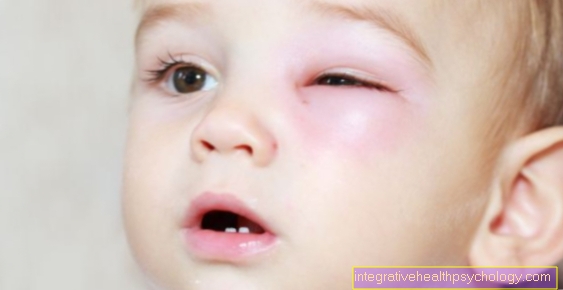
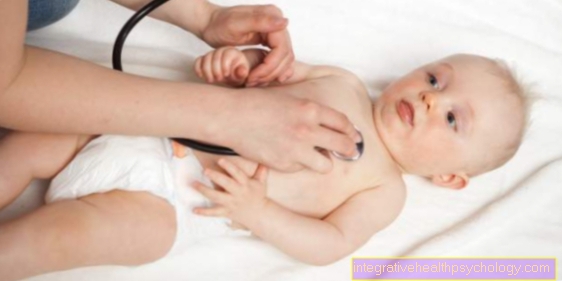


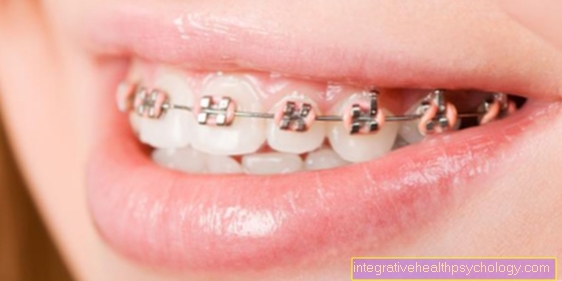

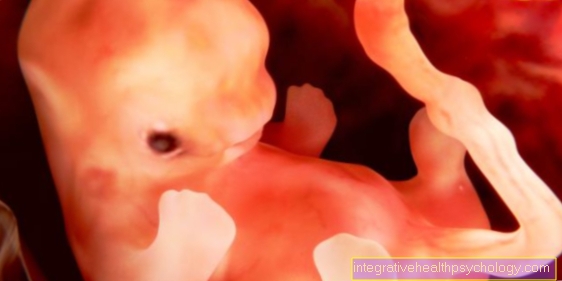

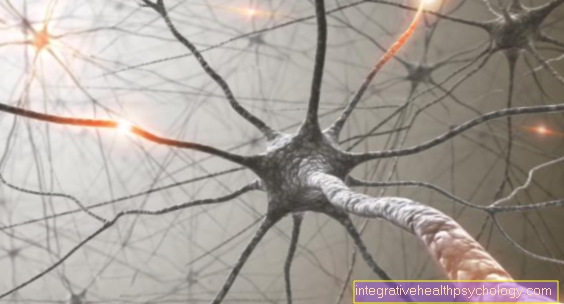


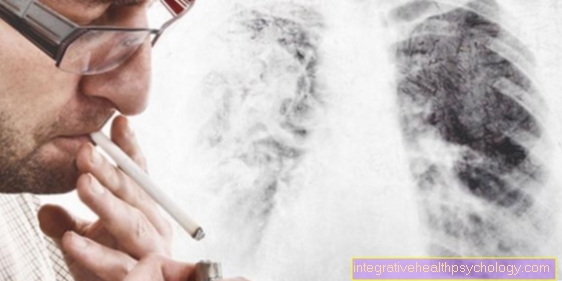
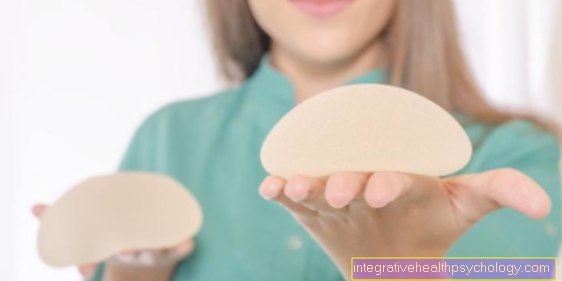

.jpg)
